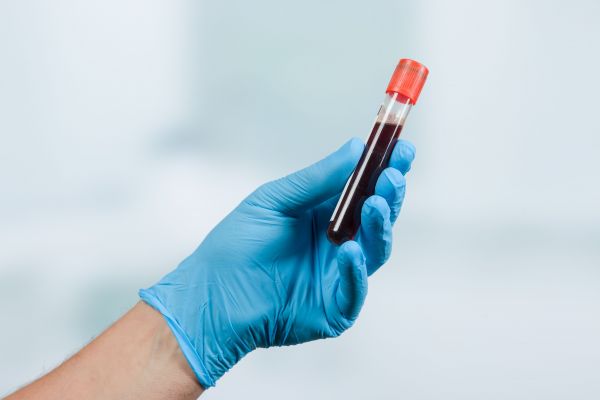Metastatic cancer can be a thief of hope for patients and their loved ones who have exhausted their treatment options. Thankfully, there’s an emerging field of precision medicine called theranostics — a combination of therapeutics and diagnostics — that’s bringing hope back to these families.
At Roswell Park, the Nuclear Medicine Team within the Department of Diagnostic Radiology boasts a highly skilled team of professionals who aim to deliver the highest quality cancer imaging and treatment using state-of-the-art technology with a patient-centered focus. Donor support will provide for a new dedicated space to practice theranostics in order to treat more patients, holding great promise for patients battling many types of cancer.
Richard’s story
Richard Phelps and his wife Cheryl live outside of Utica, but Roswell Park is their first and only choice for cancer care. Their first experience with Roswell Park was in the 1980s when Cheryl was diagnosed with stage 4 Hodgkin lymphoma. After “all kinds of treatment; you name it,” Richard said, she came through that journey. Now she’s 78 and thriving.
In 2004, cancer screening showed Richard’s prostate specific antigen (PSA) results beginning to grow higher. He knew he wanted to be seen by the best. And for him, that meant Roswell Park. Experts let him know monitoring was all the was needed at the time. For nearly 20 years, Richard and his Roswell Park care team kept a diligent eye on his otherwise excellent health.
In 2023, Richard’s PSA count spiked. It was time to act and thankfully his doctor, Gurkamal Chatta, MD, Clinical Chief of Genitourinary Medicine, had the answer. After a more traditional medication wasn’t proving effective for his specific cancer, Dr. Chatta introduced Richard to theranostics. Richard started his treatment in April and finished in January 2024 with incredible success: his PSA count drastically dropped from over 9,200 to about 7.
Richard’s philosophy throughout his cancer journey is simple: “Come to the place where they do the best work and hope for the best,” he said.
How theranostics works
A theranostics patient will first receive a radioactive imaging drug to identify where the cancer is located throughout their body. A few weeks later, that patient will receive the treatment drug that will begin to kill the cancer, and a series of therapeutic visits will continue.
Currently, Roswell Park uses theranostics to treat a growing number of patients. First, it served patients with metastatic neuroendocrine tumors, a rare but increasingly prevalent form of cancer and a disease site for which Roswell Park is nationally recognized for treating. Then, a newly FDA-approved drug became available for patients with metastatic prostate cancer, a type of cancer that affects a far greater number of patients, increasing the need for the availability of theranostics. With an expected significant increase in demand for this procedure, there is an immediate need to expand the footprint of theranostics in Roswell Park.
“This is a new option that can improve the quality of life for someone living with metastatic prostate cancer and improve their survival,” explains Ermelinda Bonaccio, MD, Chair of Diagnostic and Interventional Radiology at Roswell Park. “We simply cannot accommodate the expected number of patients in the current setting. With the anticipated volume of patients, it just won’t be possible to continue to do it in this outpatient-in-an-inpatient-bed setting.”
Currently, the team is utilizing Roswell Park’s three shielded rooms in the hospital for this outpatient procedure but these shared rooms are not always available for outpatient use. On average, a doctor is only able to see two patients per week for theranostics and about 20 overall per year due to scheduling complications, limited resources and limited physical space. In addition to being a shared space, the existing rooms are not physically near the Nuclear Medicine wing, which adds a level of complexity to patient care. While this has been somewhat feasible in the short-term, this space will not be sufficient to keep up with the anticipated increased volume, especially as scientific advancements continue to develop in this area for more cancer types.
Theranostics are Roswell Park
A pioneering approach that discovers features of your cancer that make it treatable with new cancer therapies.
Donors offer a solution
With your support to secure the necessary funds to fill this need, Roswell Park will build four shielded rooms dedicated to outpatient theranostic procedures within Nuclear Medicine. This facility will not only expand options for patients but will lay the foundation for participation in clinical trials and research surrounding the potential for theranostic approaches to reach other cancers, such as sarcoma, lymphoma and esophageal cancer.
There are only approximately 50 centers in the country that offer this type of care, and only a few of those have dedicated theranostic centers. Roswell Park will continue to be one of those few, leading the industry in this cutting-edge cancer care, now with its own dedicated center.
Donor support doesn’t go unnoticed by our patients. Richard was moved to know that supporters of the Roswell Park Alliance Foundation wanted to pave the way for more patients like him to find hope.
“Oh it means the world to me,” he said. And with this expansion comes so much hope for the future, for patients experiencing other cancer types, too. “I hope they can get more medicine to help more people.”
Your generosity generates hope for patients who are with us today and patients who will seek care in the future.
Editor’s Note: Cancer patient outcomes and experiences may vary, even for those with the same type of cancer. An individual patient’s story should not be used as a prediction of how another patient will respond to treatment. Roswell Park is transparent about the survival rates of our patients as compared to national standards, and provides this information, when available, within the cancer type sections of this website.





